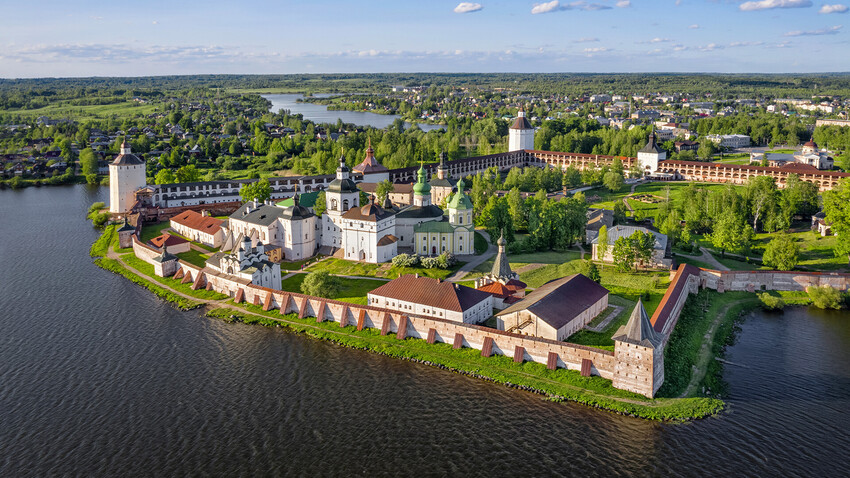
This was in the second half of the 14th century. Sergius of Radonezh had recently founded his Trinity Monastery near Moscow (now mostly known as the St. Sergius Trinity Lavra) and, in fact, became the spiritual leader of Russia at that time. So, his followers began to found new monasteries in all corners of the country. Gradually, the Grand Princes began to actively support the Russian Orthodox Church. Soon after, the Russian army for the first time fought back the Tatar-Mongols in the Battle of Kulikovo and the unification of Russia began.

Lifetime icon of St. Cyril, presumably painted by Dionisius Glushitsky, 1424
Tretyakov GalleryCyril (Kirill) was also a disciple of Sergius and was characterized by his asceticism and clairvoyance. He was a monk in Moscow's Simonov Monastery and once was elected as abbot of the monastery, but he refused the honorable position, preferring solitary prayer in his cell. Sergius himself often came to the monastery on business and he often talked with Cyril.
According to the hagiography (life) of Cyril, one night, during his diligent prayer, he claimed to have heard the voice of the Mother of God that told him to go to the north, to Beloozero (‘White Lake’). "There I have prepared for you a place where you can be saved," the Mother of God added.
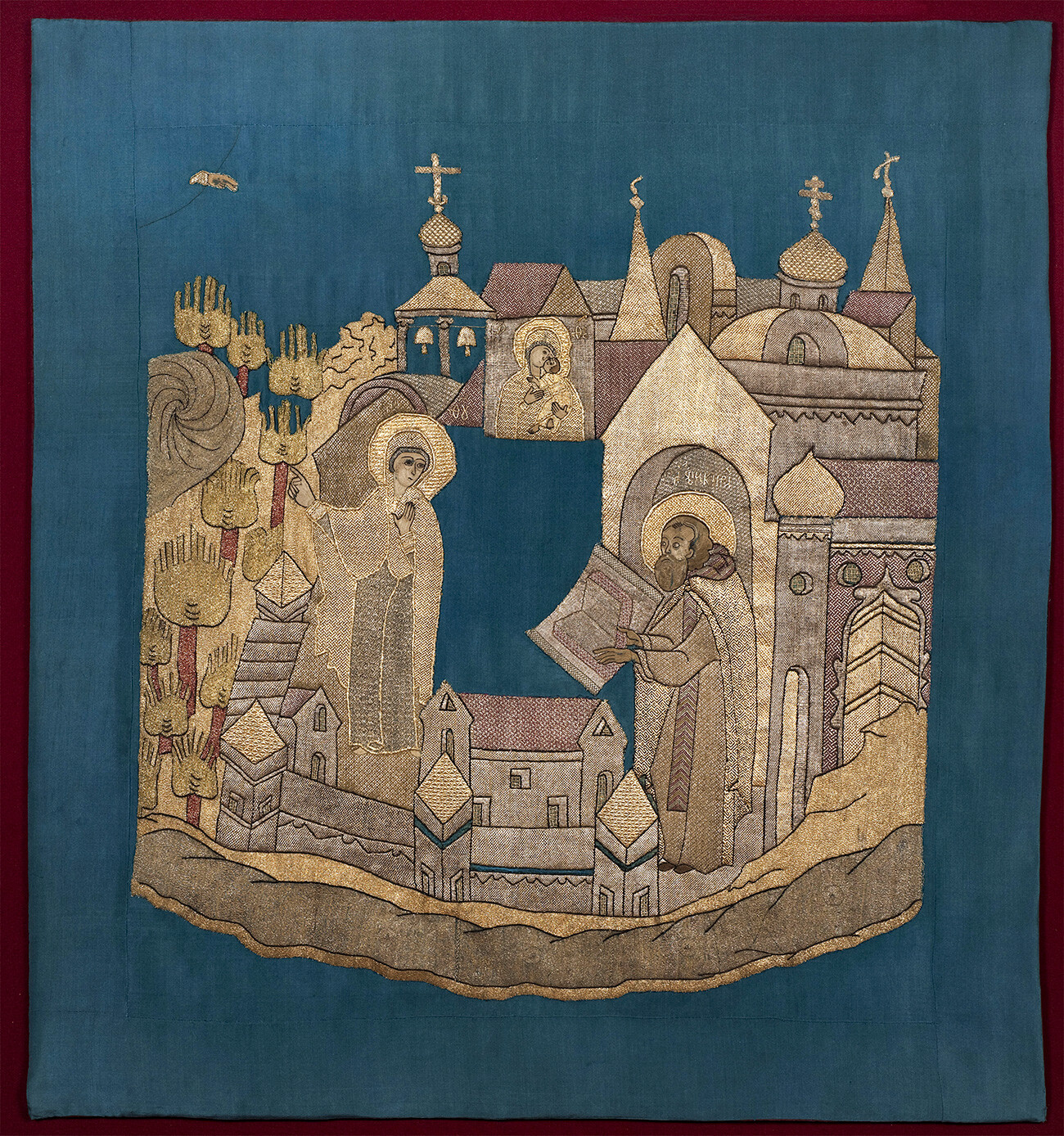
Shroud featuring the “ Appearance of the Mother of God to the Monk Cyril of Belozersk”. 1620-35. Contribution of the Suleshevs boyars to the Kirillo-Belozersky Monastery.
Getty ImagesTogether with the monk Ferapont, Cyril went to the Russian North to Beloozero. But, just 40 km short of the ‘White Lake’, he stopped at another lake named Siverskoye. There, he recognized the place from his vision, which was indicated to him by the Mother of God herself. So, in 1397, he founded his monastery there, now known as the Kirillo-Belozersky Monastery.
This monastery would be known for the same strict rules as Sergius' monastery.
Soon, several more monasteries were created around the Kirillo-Belozersky Monastery and all of them became important spiritual centers. Monk Ferapont himself went further and founded his Ferapontov Monastery 20 kilometers from Kirill.
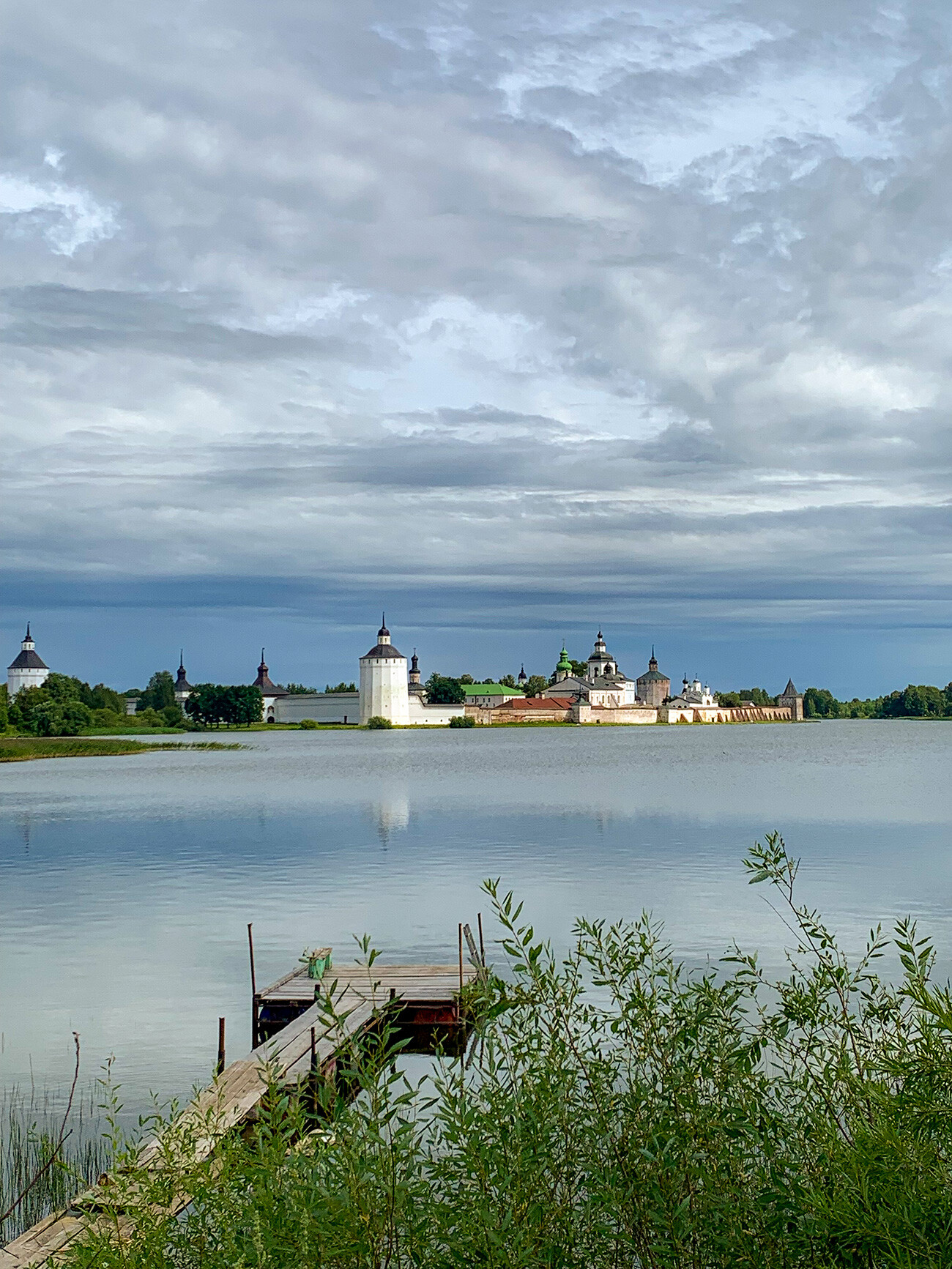
View to the Kirillo-Belozersky Monastery from the other shore of Lake Siverskoye
Alexandra GuzevaAnother famous monastery nearby was founded by Nil Sorsky in the 15th century. It was renowned for the extremely ascetic lifestyle of its monks and Nil himself became the founder and leader of the ‘Non-possessors’ (monks who rejected all property and renounced the right of monasteries to own land and other property and to increase wealth).
That is why the Kirillov Monastery and other monasteries in the near vicinity became a place of attraction for pilgrims and also an important economic center in the Russian North. It was through these places that the trade route to the White Sea and Arkhangelsk went. And many merchants, of course, stopped there both to spend the night and to pray.
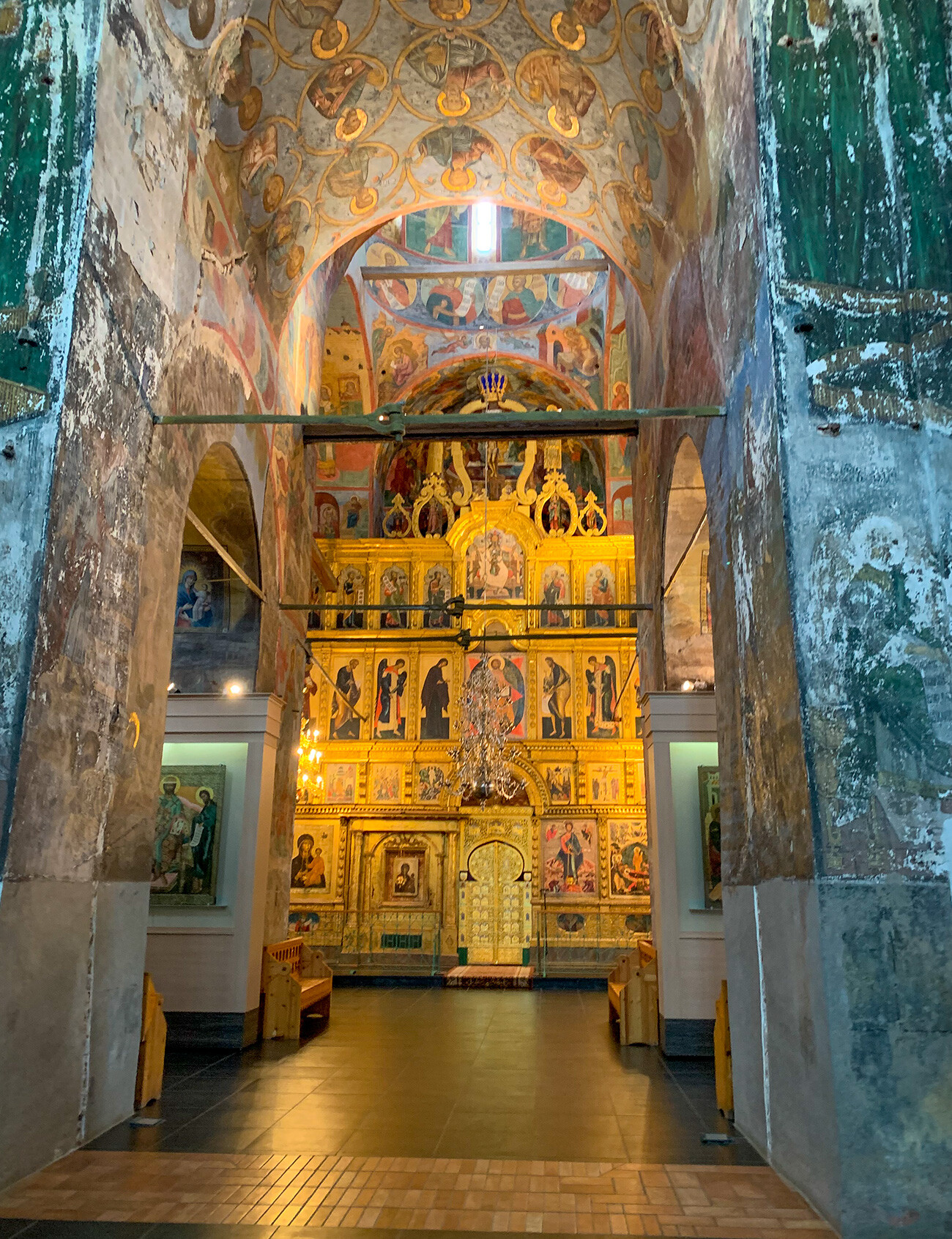
Inside the Dormition Cathedral
Alexandra GuzevaThe monastery was also favored by many great princes, who donated a lot of money. And it was in these seemingly remote places that masterpieces of religious painting and iconography appeared, as the best church artists of Russia worked there.
Moscow Grand Duke Vasily III was especially fond of the Kirill Monastery. In 1529, he traveled 460 km from Moscow with his wife Elena Glinskaya to pray for the birth of an heir there. A year later, they did have a son, the future Tsar Ivan the Terrible.
This detail in the biography of the controversial tsar made his birth in the eyes of the common people a manifestation of God's sign. Ivan the Terrible himself highly honored St. Cyril and came to the monastery several times. His epistle to the Kirillo-Belozersky Monastery has survived to this day. This letter of the tsar to the brethren is considered a literary monument of the 16th century.
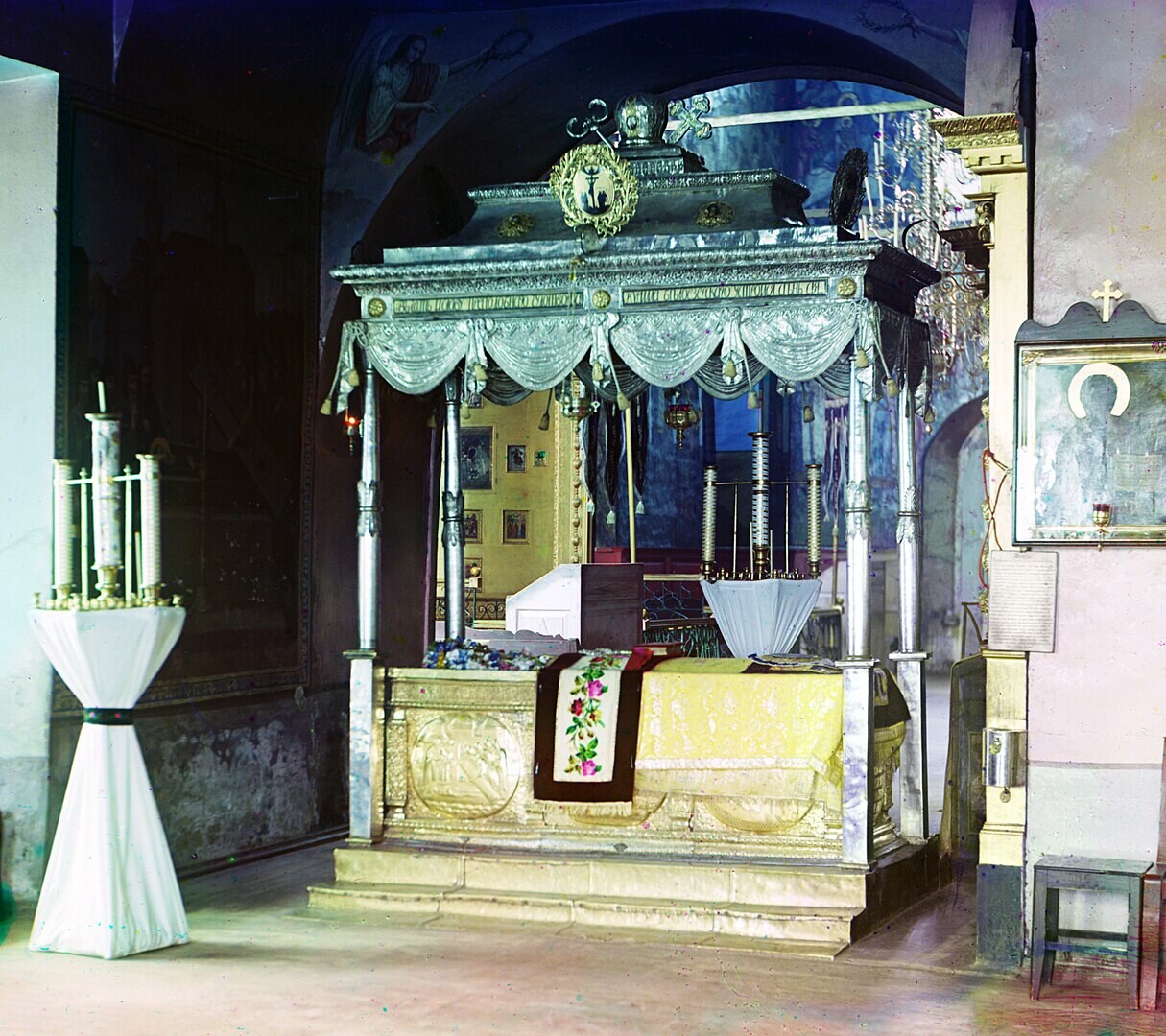
The shrine with St. Cyril's remains, lost after the 1917 Revolution. Photo taken in 1909
Sergei Prokudin-GorskyDespite the unpleasant reason for writing the letter (the monastery sheltered one of the royal boyars persecuted by the ‘oprichniks’), its tone is extremely respectful towards the brethren.
It is known that the tsar himself dreamed of a quiet monastic life. And, according to one legend, shortly before his death, he even took the monastic schema in the St. Cyril Monastery.
Patriarch Nikon, the main cause of the Russian church schism and the author of the large-scale church reform of the mid-17th century, also paid a visit to the Kirillo-Belozersky Monastery. He was sent there in exile after he lost the trust and favor of Tsar Alexei Mikhailovich after numerous palace intrigues and conspiracies. As a result, in 1666, the Council of the Russian Church deprived Nikon of his dignity and sent him into exile.
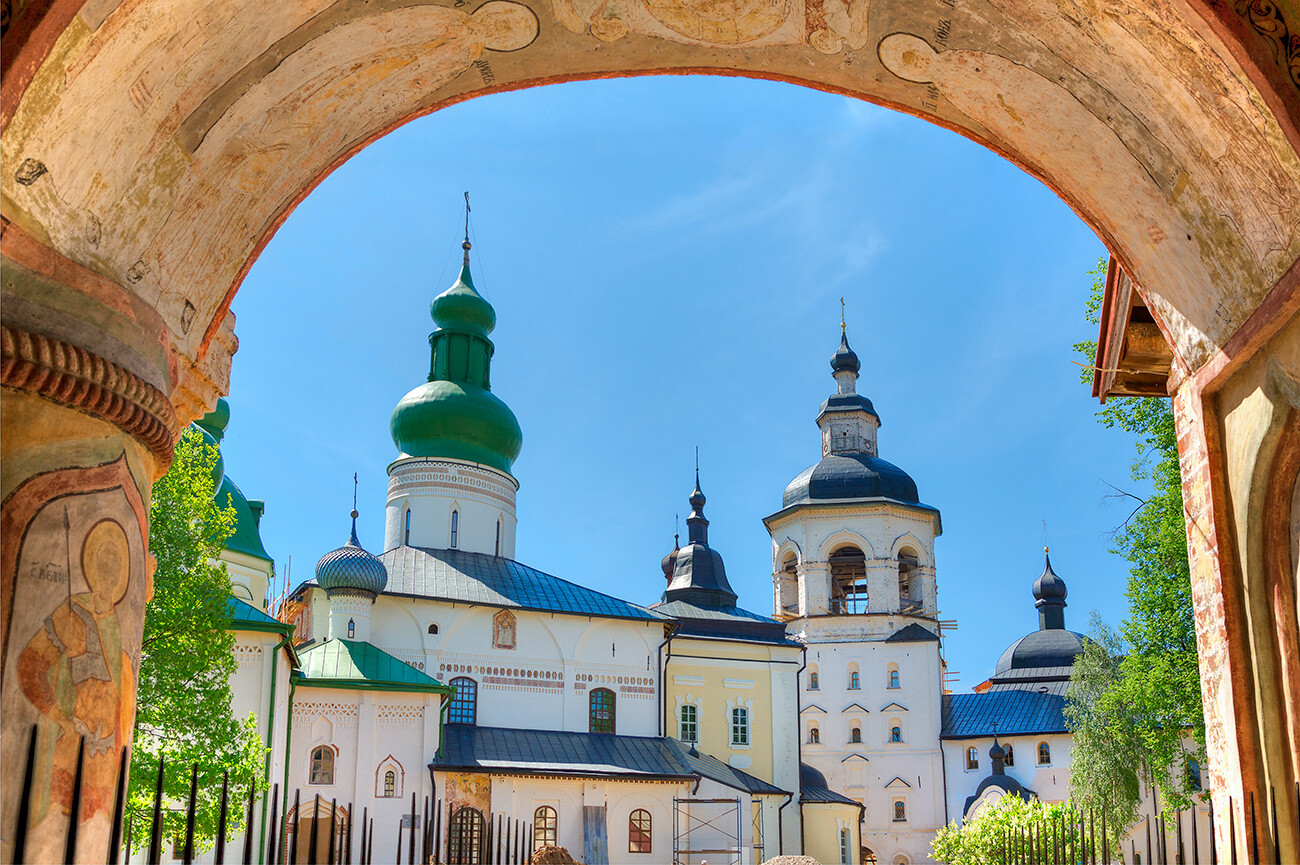
The ensemble of the Dormition Cathedral
Getty ImagesAt first, he stayed in the Ferapontov Monastery and, after the death of Tsar Alexei Mikhailovich, who still favored him, Nikon was sent to the Kirillo-Belozersky Monastery, where the conditions were much stricter. There, he spent the last five years of his life.
Nikon was not the only noble "prisoner" of the distant monastery. Unwanted boyars and even relatives of the tsar family were exiled there from Moscow (for example, Prince Shuisky under Boris Godunov and Peter the Great's grandfather during the Streltsy rebellions of the late 17th century).
Monasteries in Russia were built as fortresses for a reason. Many of them were strongholds and the Kirillo-Belozersky Monastery is no exception. During the ‘Time of Troubles’ in the early 17th century, the monastery withstood a long siege by Polish invaders.
They tried to storm the fortress several times, but they were not successful. The siege was repulsed.

Ensemble of the Kirillo-Belozersky monastery
Getty ImagesAfter this siege, the monastery was seriously strengthened and authorities realized that it had a special fortification value. However, the walls did not witness any more attacks. When Peter the Great came to power and redirected trade routes with Europe through St. Petersburg to bypass Arkhangelsk and Beloozero, the monastery fell by the wayside of trade and economy and gradually began to wither away.
Anyone entering the monastery for the first time may be a little confused. We’re used to seeing one wall around a monastery, but this one has a whole complex system of fencing. And, to get to the main church, for example, you need to pass through several walls at once.
In fact, there are actually two monasteries inside the complex: the oldest part is the Maly Ivanovsky (Small John) Monastery. It was there on a hill that Cyril settled when he went to these lands. Today, the Church of John the Baptist stands on that hill with a side chapel in honor of Cyril. It was built with the money of Vasily III, in gratitude for the birth of his son. The Kirillo-Belozersky male diocesan monastery now functions on the territory of the former Ivanovsky Monastery.
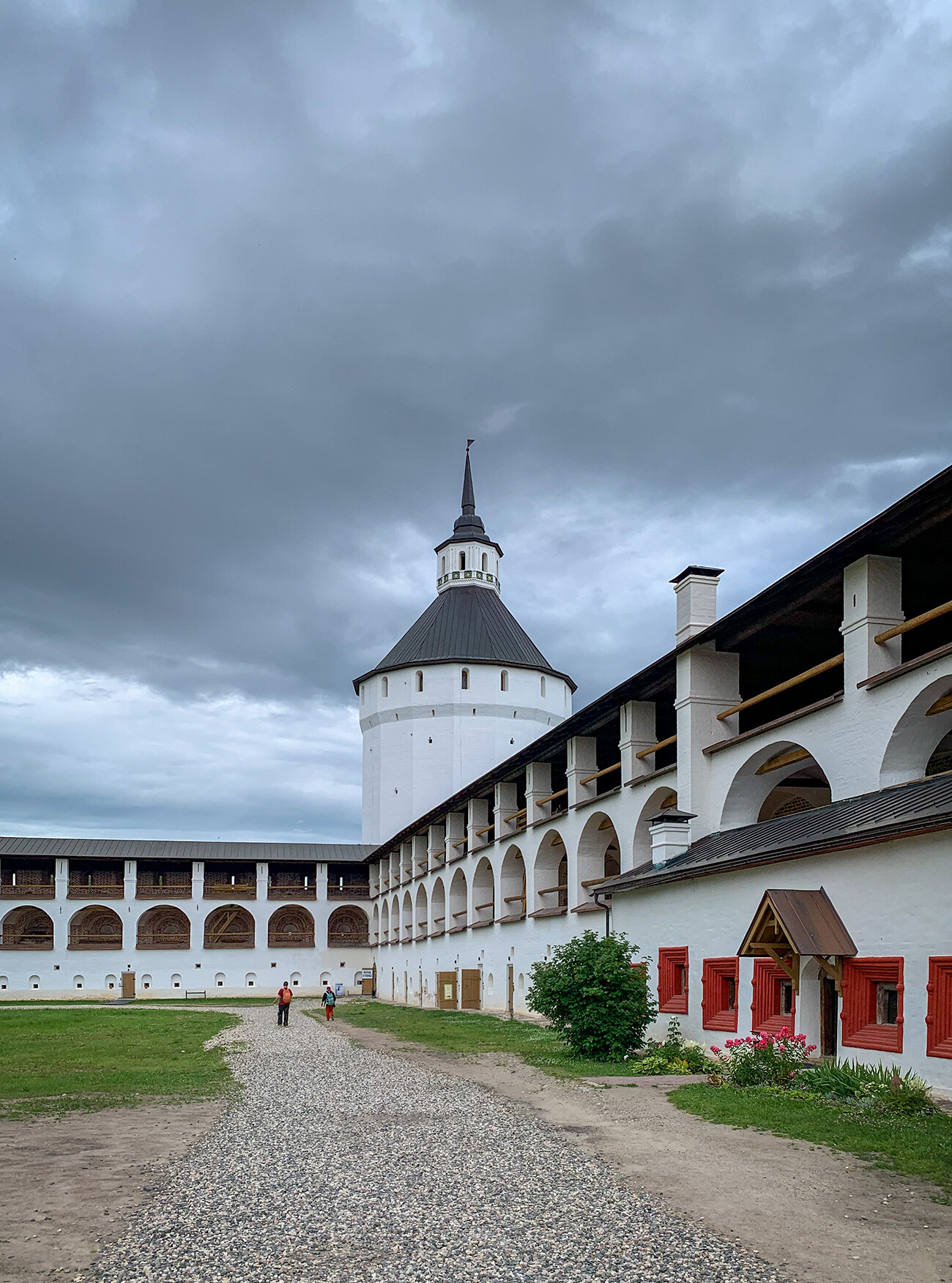
The ‘New Town’ fortress wall
Alexandra GuzevaOn the neighboring hill stands the walled Great Dormition Monastery and its main attraction is the unique Dormition Cathedral of the late 15th century with a masterpiece iconostasis and many frescoes. Wall to wall near it stands the Baroque Church of Cyril, where the relics of Cyril of Belozersk are kept.
Both monasteries make up the ensemble of the so-called ‘Old Town’. There is also another enclosed part called the ‘New Town’. It was built after the Polish intervention in the second half of the 17th century exactly as a defensive structure on the approach to the main monastery section (On the other side, it has a natural barrier - Lake Siverskoye).

The Transfiguration Church of the Dormition monastery
Ilya Timin/SputnikThis is the largest Orthodox monastery not only in Russia, but also in Europe. Its area totals about 12 hectares (for comparison: the area of the Trinity-Sergius Lavra is only about 3 hectares).
In Soviet times, the monastery was fortunate to become a museum already in 1924.
Dear readers,
Our website and social media accounts are under threat of being restricted or banned, due to the current circumstances. So, to keep up with our latest content, simply do the following:
If using any of Russia Beyond's content, partly or in full, always provide an active hyperlink to the original material.
Subscribe
to our newsletter!
Get the week's best stories straight to your inbox